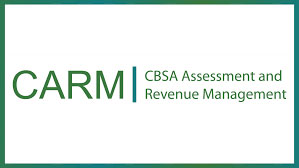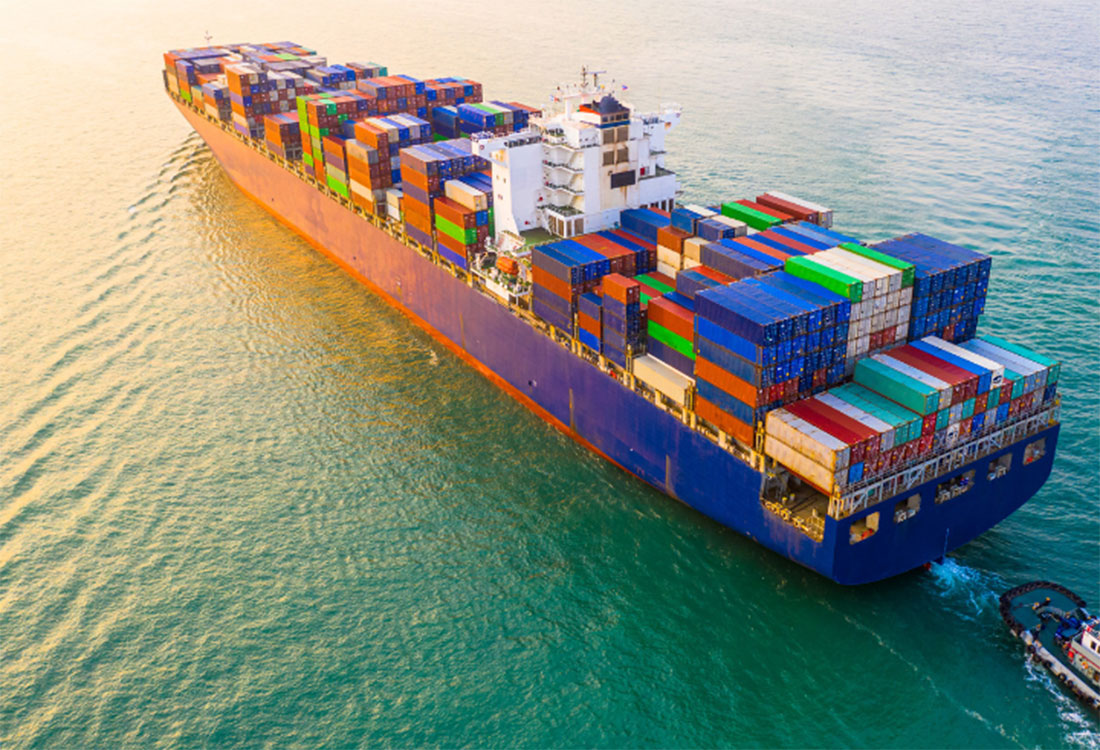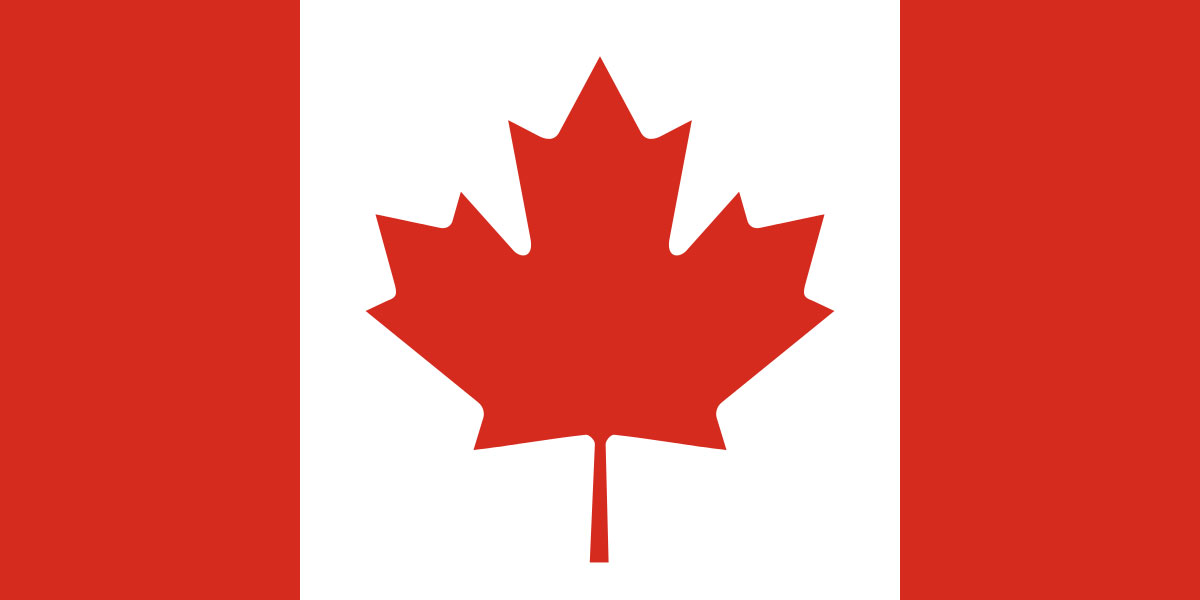CARM Registration MANDATORY for all importers before April 25, 2024
CARM (CBSA Assessment and Revenue Management) is mandatory May 13, 2024 and ALL importers must register in the CARM Client Portal – otherwise you will not be able to import goods into Canada.
CBSA is implementing a cut-over period (from the old system to the new system) effective April 25, 2024. During this transition period, members of the trade community will not be able to conduct accounting functions, access their accounts, or register in the CARM Client Portal.

As a result, importers who have not registered in the CARM Client Portal by April 25, 2024 will not be able to import goods into Canada!
From the Canada Border Services Agency (CBSA), “CARM is here now. Before May 2024, importers and other trade chain partners need to register and adapt their systems and business practices. Getting aligned with CARM now will help you avoid interruptions and delays later.”
Visit Universal Logistics’ website to learn more about CARM and to watch videos to help walk you through the CARM registration process.
For access to the CBSA CARM Client Portal Click Here.
We are also ready to assist you with this registration process and happy to answer any questions you may have. Simply reach out to your Client Care representative or contact Mark Glionna, Vice President – Client Relations & Business Development.
All importers must realize the magnitude of this CBSA initiative and the impact it will have on them. You may not be aware, but importers who do not register for the CARM Client Portal will face significant delays at the border once Release 2 comes into effect.
FREE CBSA Webinars – CARM Client Portal Onboarding
The CBSA’s Assessment and Revenue Management (CARM) team is hosting free CARM webinars – tailored specifically for Importers – and focusing on 3 topics; Registering your small or medium business on the CARM client portal, Registering on the CARM client portal for non-resident importers and What you Need to know for Release 2.
Registration is required for these webinars. Please register using the links below:
Registering your small or medium business on the CARM client portal
A new webinar dedicated to helping small and medium businesses understand how CARM may affect them while guiding them through the steps required to register on the portal.
What you need to know for Release 2
A webinar that will help you understand and prepare for Release 2.
Ocean Freight market update
There currently are two situations causing a disruption to the global ocean freight trade. Firstly, as a result of geopolitical tensions, carriers are deciding to avoid the Red Sea and the Suez Canal following attacks by Yemen’s Houthi rebels in support of Hamas in the war with Israel. The second risk arises from climate change, as the Panama Canal has had to reduce its capacity to preserve water levels in the canal.
The Panama Canal is one of the most important waterways in the Western Hemisphere, handling upwards of 40% of all US container traffic. In terms of the Suez Canal, about 15% of world shipping traffic transits this waterway, serving as the shortest shipping route between Europe and Asia. Any factors compromising cargo flow via these key shipping lanes will have worldwide ramifications.

Carriers have had to make the choice to wait in line to transit the Panama Canal and reroute away from the Suez Canal to sail around the Cape of Good Hope, resulting in extended lead times and potential port congestion. They will also have to weigh the impacts of increasing speed or adding additional vessels to these routes in order to maintain schedule integrity. Another thing carriers can do to keep transit times between main ports competitive, is to cut out smaller ports and change the rotation so that larger ports at both ends of the service are closer to each other in the rotation.
Analysts have advised that rates will remain elevated for the near future, as steamship lines navigate these ongoing issues. The previous narrative of the market was that it was heavily oversupplied, with expectations for a decrease in freight rates, however, this has since changed due to the current climate. The more disruption caused by the diversion of vessels, the higher the rates will climb. Currently, all main carriers are starting to see equipment shortages at the main ports in China, and the expectation is that it will expand to more loading ports in the next few weeks. Ship diversions are also causing increased port congestion as ships cluster at main ports.
Many industry experts have predicted that the fallout caused by the crisis in the Red Sea and the issues with the Panama Canal should not be as severe as was experienced during the global pandemic, as consumer spending has wound down and the surplus of container ships is greater today than it was during the pandemic. That said, rates for Asia to North America’s West Coast shipments are rising sharply, as shippers are switching shipments from East to West Coast service to avoid supply chain disruptions. Similar upward trends in regard to rates are being experienced in transatlantic routes, with carriers announcing substantial General Rate Increases (GRIs) in February.
While the Suez and Panama Canal issues are front and centre, there is also an ongoing threat of labour action by dockworker unions representing stevedores who work at US East Coast and Gulf Coast terminals. Analysts expect that in February, when transpacific contract negotiations open up, there will be more freight moving via West Coast ports, as importers want to ensure they have space and less disruption going into peak shipping season later in 2024. There is also the threat of labour action by longshore workers at the port of Montreal, who have been without a labour deal since their agreement expired on December 21, 2023. This is of great concern to Canadian shippers, as Montreal is the second largest port in Canada, surpassed only by Vancouver, and is the key hub for transatlantic cargo.
For more information, contact David Lychek, Director – Ocean & Air Services.
Canada’s New Anti-Forced Labour Supply Chain Law – Reports due May 31st
Canadian Bill S211, “An Act to enact the Fighting Against Forced Labour and Child Labour in Supply Chains Act and to amend the Customs Tariff “, received Royal Assent on May 11, 2023 and came into effect January 1, 2024.
The act requires certain companies (“Entities”) to submit annual reports, on or before May 31 each year, outlining steps taken during it’s previous financial year to prevent and reduce the risk that forced labour or child labour is used by them or in their supply chains.

What entities are covered under the Act?
Entity means a corporation or a trust, partnership or other unincorporated organization that
- ( a ) is listed on a stock exchange in Canada;
- ( b ) has a place of business in Canada, does business in Canada or has assets in Canada and that, based on its consolidated financial statements, meets at least two of the following conditions for at least one of its two most recent financial years:
- ( i ) it has at least $20 million in assets,
- ( ii ) it has generated at least $40 million in revenue, and
- ( iii ) it employs an average of at least 250 employees; or
- ( c ) is prescribed by regulations.
What entities are required to file reports?
This Part applies to any entity that is:
- ( a ) producing, selling or distributing goods in Canada or elsewhere;
- ( b ) importing into Canada goods produced outside Canada; or
- ( c ) controlling an entity engaged in any activity described in paragraph ( a ) or ( b ).
What must be included in the report?
The report must also include the following information in respect of each entity subject to the report:
- ( a ) its structure, activities and supply chains;
- ( b ) its policies and its due diligence processes in relation to forced labour and child labour;
- ( c ) the parts of its business and supply chains that carry a risk of forced labour or child labour being used and the steps it has taken to assess and manage that risk;
- ( d ) any measures taken to remediate any forced labour or child labour;
- ( e ) any measures taken to remediate the loss of income to the most vulnerable families that results from any measure taken to eliminate the use of forced labour or child labour in its activities and supply chains;
- ( f ) the training provided to employees on forced labour and child labour; and
- ( g ) how the entity assesses its effectiveness in ensuring that forced labour and child labour are not being used in its business and supply chains.
Reports will be made available to the public in two ways:
- In an electronic registry on Public Safety Canada’s website.
- In a prominent location on the reporting entity or government institution’s website.
For more information please refer to the Government of Canada– Public Safety and Bill S211 or contact Brian Rowe, Director – Customs Compliance & Regulatory Affairs.
EU Carbon Border Adjustment Mechanism (CBAM)
The EU’s Carbon Border Adjustment Mechanism (CBAM) entered it’s first reporting period for importers ending January 31, 2024.
The CBAM will initially apply to imports of certain goods and selected precursors whose production is carbon intensive and at most significant risk of carbon leakage: cement, iron and steel, aluminium, fertilisers, electricity and hydrogen. With this enlarged scope, CBAM will eventually – when fully phased in – capture more than 50% of the emissions in ETS covered sectors. The objective of the transitional period is to serve as a pilot and learning period for all stakeholders (importers, producers and authorities) and to collect useful information on embedded emissions to refine the methodology for the definitive period.

The gradual phasing in of CBAM over time will also allow for a careful, predictable and proportionate transition for EU and non-EU businesses, as well as for public authorities. During this period, importers of goods in the scope of the new rules will only have to report greenhouse gas emissions (GHG) embedded in their imports (direct and indirect emissions), without making any financial payments or adjustments. Indirect emissions will be covered in the scope after the transitional period for some sectors (cement and fertilisers), on the basis of a defined methodology outlined in the Implementing Regulation published on August 17, 2023 and its accompanying guidance.
Sectors covered in the first phase of the CBAM:
CEMENT | IRON & STEEL | ALUMINIUM |
FERTILISERS | ELECTRICITY | HYDROGEN |
Here is the full list of goods, by Category and HS Tariff Heading for which the CBAM is applicable to:
For more information refer to European Commission Taxation and Customs Union publication or contact Brian Rowe, Director – Customs Compliance & Regulatory Affairs.
Global Spotlight Quiz

Name the city that is home to the City of Arts and Sciences
- Founded by the Romans in 138 BC. Tourists can visit the Roman remains at the museum behind the city’s famous cathedral.
- Has a park that used to be a river. After a devastating flood in 1957, the Turia river was diverted around the city’s outskirts and the old course of the river turned into a green space.
- Has the largest local market in Europe and hosts the largest street party in the world.
- Has 3 UNESCO listed attractions.
- Home of the Holy Grail, which is believed to be kept in a chapel inside the cathedral.
- The birthplace of Paella.

For more information about shipping freight to or from this city, contact Debbie McGuire, Director – Freight Solutions.
Quick Tip
How to avoid customs penalties for non-compliance
Sooner or later, your business will be audited by Customs (CBSA) to ensure you have not committed violations that are subject to AMPS (Administrative Monetary Penalty System) penalties.

Make sure you are ready by:
- maintaining a documented paper trail of every import/export shipment from purchase order to delivery
- ensuring all customs declarations, generated from information on the shipping documents, mirror your internal ledgers (i.e. your reporting to Customs must reflect commercial reality)
- keeping all records relating to customs transactions for the prescribed time limits (six years plus current year)
We offer professional customs consulting services to assist you in becoming fully compliant. Remember, investing in compliance is always less costly than paying for non-compliance.
At Your Service:
Vincent Arca
Canadian Customs Operations (Windsor)
Vincent Arca joined Universal Logistics in May 2022, as a member of our Customs Operations team in Windsor. Vincent currently works with our Border Clearances team, where he processes the customs release of truck and courier shipments.
Vincent’s excellent communication skills and overall knowledge of the customs clearance process ensures that our clients’ needs are well taken care of.
Vincent can be reached by phone (519) 972-8050, ext. 2403 or by email.

Vincent Arca
Canadian Customs Operations
(Windsor)
SMART Logistics
Controlling how freight moves through your supply chain could save you thousands – or more.
Working with us means someone always asks: how can we make this shipment better?
Single-sourced trucking, customs clearance and distribution to expedite your freight shipments between the U.S. and Canada.
Route is produced monthly for the clients of Universal Logistics. Reader comment and story ideas are welcome. Comments of general interest to all Route readers will, with the permission of the writer, be published. Copyright © 2024 Universal Logistics Inc. All rights reserved. Reproduction for any commercial use is strictly prohibited.
Route is produced by Universal Logistics. Editor: Bettina Scharnberg. Email: bscharnberg@universallogistics.ca While every effort has been made to ensure the accuracy of information contained herein, Universal Logistics accepts no responsibility or liability for errors or omissions. Written correspondence should be forwarded to:


